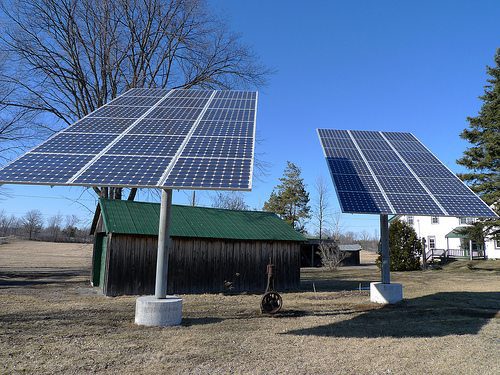The Australian solar industry has urged the newly formed Australian Renewables Energy Agency to develop more ambitious targets for remote and off-grid use of renewable energy.
In response to an ARENA consultation paper on its off-grid plans, The Australian PV Association says the 50MW target by 2020 outlined by ARENA is not nearly ambitious enough, and should amount to a yearly target rather than an aggregate.
The APVA says an additional 150MW to 300W of renewable generation should be installed off-grid. Targets of 50MW per year from 2014 would ensure an immediate start and that at least some systems are built before the program ends.
ARENA chairman Greg Bourne told RenewEconomy last year that the development of off-grid and remote systems would be one of the key targets for the agency, which is managing around $3.2 billion of funds, including $1.7 billion in monies yet to be allocated.
“Essentially what you are doing is diesel displacement, or diesel augmentation. Diesel is very, very expensive, so it takes it much closer to commercialisation,” Bourne said at the time.
“If you can prove the technology and the control systems for forecasting and intermittency, you have a lot more confidence in trying it nearer to a large grid and beginning to sweep away the barriers of ‘oh, we can’t do this, everything will fail.”
He said there was a “huge opportunity in the north-west of Australia, the Northern Territory, and northern Queensland, as well as “fringe of grid areas” that will also become interesting.
The APVA said ARENA’s targets should reflect that ambition. It noted there was an estimated 2GW of diesel generation capacity in mines and other remote locations in Australia, so renewable energy penetration should be at least 10 per cent, but could be much higher, given the cost effectiveness. Yet ARENA had only suggested two projects of 10MW mining systems demonstrating renewable energy integration commissioned by 2018.
Last week, RenewEconomy noted the take-up of renewable energy by mining companies in off-grid and “fringe-of-grid” locations in Chile, where a 10MW solar thermal plant was opened this month, and where BHP Billiton has also commissioned a 1MW solar PV plant to service its high-altitude copper mine.
It seems, though, that Australian miners have a blockage when it comes to renewable energy. Even though Australia’s geography means that it has become a leader in off-grid systems, including the integration of renewables, Australian mining groups – or at least their energy consultants, are deeply conservative and risk averse, despite the huge potential to reduce expensive diesel fuel costs.
Like Bourne, the APVA says systems managers for Australian mining operations will need to see renewables working with diesel and/or gas generation in off-grid locations before locking in their own projects.
To help accelerate the move to renewables, the APVA has also urged that fossil fuel subsidies, particularly in the use of diesel rebates, be made more transparent, – either in consumer bills or agency budgets “so that the extra support necessary from ARENA to allow renewables to be cost competitive is clear.”
It also said self-sufficiency of remote communities in power generation will also have associated benefits of boosting local economies and reducing fuel tanker freight levels, and wanted better measurements of emissions avoided by the use of renewables, and their impact on deferring, reducing or displacing the need for grid augmentation.








